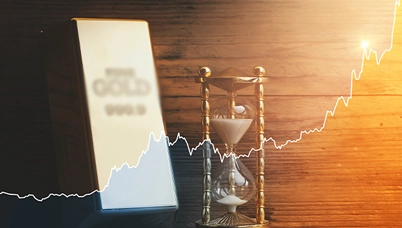Ajit Dayal’s interview with the Hindu Business Line
Posted On Monday, Oct 05, 2009
Q. Recently you told a TV channel that the Sensex will be back at 21000 by March 2010. Do you really think so?
I actually wrote that in October 2008, when the index was at 8,000. Let’s look at it this way. When the world economy was jittery last year, everyone was bearish — the IMF, World Bank and the 'sell side' analysts from the major brokerages were all downgrading economic growth rates and earnings across the world.
But our view is that India had nothing whatsoever to do with the US credit crisis. Lehman going bust was a capital market problem. So all the short-term money that India took in through the P-Note (Participatory Note) route fled.
But corporate India’s linkage to the US economy is very low. When the US went through this big bubble of the consumption boom created by soaring home prices, India had nothing to gain from that. It follows that as that consumption slows, India has very little to lose.
Q. However, India’s capital market is quite reliant on global markets isn't it?
That is because, of all the four BRIC markets — Brazil, India, Russia and China — India’s is the most open. India’s original FII policy was about attracting institutional investments for the long term. There is nothing long-term about P-Notes.
I was part of the original Jardine Fleming team which designed P-Notes in 1994-95. P-Notes have become very big since 2003, when hedge funds were born. If you plot a graph of hedge fund growth and the growth in P-Notes in India, you will find a direct correlation.
India’s FII policy has been completely hijacked. We made a blunder, in my opinion, of giving brokers an FII licence meant for fund managers. When I have an FII licence and buy securities directly in India I earn a 0.1 or 0.2 per cent commission. When I offer this exposure through a P-Note, I earn about 1 per cent.
With the velocity of that money, you can see which will be preferred. As I said, India’s is the most open BRIC market. China has practically a closed market. You have got to wait to obtain permission and tell the regulators how much you plan to invest. Brazil’s market is more open, but relatively small. Nor is Russia that attractive.
So if you want to invest in the BRICs for that extra emerging markets Beta, India is the obvious choice. Which is why you got a chunk of the foreign flows in 2006-07 and enjoyed that wonderful boom.
Q. We again have a flood of liquidity coming into Indian markets in 2009. With the relaxations, have P-Note flows resumed as well?
I would say there is a good portion of P-Note money. P-Notes have been a little subdued this year because hedge fund activity remains subdued. However, hedge funds are reviving worldwide and with that P-Notes too will see an increase. That is why as I make a case for Sensex 21,000, I can make an equally strong case for 8,000, too. If the US cracks on Monday, we’d plunge too on Tuesday! I’m not saying P-Notes are wrong. I’m only saying that if the idea is to get long term capital into India, P-Notes is the wrong route for that. If you want to make India the most liquid stock market with great price discovery, P-Notes may be the way to go.
If you look at the SEBI data, there is Rs 4,000-5,000 crore a day of FII buying; all that is not long-term money. So we’ve got to live with that. If you see the market at 21,000 on fundamentals, you should be prepared to see it at 8,000 on fears too.
Q. Do fundamentals really lead you to a scenario of the Sensex going back to 21000?
What may lead to Sensex 21,000 by mid-2010 is better earnings, overlaid with a bit of greed. I already explained why India is not really linked to the global economy. Therefore, India’s GDP may continue to grow at 6-6.5 per cent a year. Company earnings, tracking GDP, will eventually move to a 15 per cent growth.
If you look at how earnings estimates work, it’s largely a matter of perception. Just before the elections, there had been a spate of earnings downgrades for Indian companies. But overnight, after the election results were out, everyone had sent out notes upgrading India’s GDP. The markets were up over 17 per cent in 36 seconds of trading, when nothing had changed about the economy or markets.
On earnings, June and September quarter numbers I believe will be better than analyst expectations. Everyone now expects Sensex earnings (EPS) by March 2010 to be almost flat, at Rs 800 or so. Were it not for the drought, you would have already seen upgrades to this.
Now, with the drought fears playing their course and the economy still doing reasonably well, you will find upgrades of 20 per cent or so to this forecast coming in, by October or November. You should remember that pushing up the 2010 estimates will require a revision of 2011 numbers too.
My reading of the situation is that with the Sensex at 17,000, it is at about 17.7 times earnings (assuming an EPS of Rs 960). On March 2011 earnings, that multiple declines to 15 times. That is not a difficult valuation to justify. If earnings actually turn out better than people expect, euphoria can then take over.
Q.You have also been advocating investments in gold. Would you still go with that, with gold prices close to an all-time high?
We see gold as a currency. I’m not a gold bug, but I’ve come to the conclusion that as long as you have governments keen to satisfy voters, you need to own gold. Globally, tax collections are never going to be adequate to meet all the electoral promises that are made. That requires paper money to be printed to fill that gap, devaluing paper money.
Think of the US dollar; today there is all this talk of how the Dollar is going to lose value. If you go back to 1971, one ounce of gold could be bought for $32. The same ounce of gold today is over $1000. The dollar has already lost 97 per cent of its value over the last 38 years! If the dollar, which is supposedly the strongest currency in the world, has lost so much value, the other currencies have simply been battered. You should have gold in your portfolio because the world is doomed to inflation and eroding purchasing power.
I look at gold as a store of value. If you work out how many samosas can an ounce of gold buy today, compared to 50 years or 100 years ago, you will find that has not really changed. That tells you that gold is a phenomenal store of value. I am not saying you should move away from paper currency. But if you want to preserve wealth you should hold 10-15 per cent of it in gold. I’m not talking about gold delivering over one year or one month. I don’t know if today’s is the best price to buy it.
But if you don’t own an ounce of gold, I would say you should start today and buy equal amounts over the next five years until you get to that 10 or 15 per cent exposure.
Q. Are investors aware of SEBI’s entry load waiver on mutual funds? How do you react to it?
Since SEBI came out with this rule on August 1, the interpretation of this rule is all over the place. Investors are confused with all this talk of trail fees and exit loads. But the spirit of this law is that mutual fund schemes should not pay any commission to distributors from investor money. We, at Quantum, are quite clear. We don’t pay commissions from entry or exit loads or anything else.
We are not denying the distributor a right to charge even a 6 per cent fee. But he should tell the investor "Hey! When I’m selling you this XYZ Fund I’m getting a 6 per cent fee. I’m not selling you this other fund, where I don’t get any fee." Quantum Mutual Fund’s assets remain small despite three years of operations. Is it possible to attain reasonable scale in the mutual funds business with just Internet presence and word of mouth?
Clearly we need to become larger. We have only Rs 70 crore as mutual fund assets under management, and Rs 2,500 crore of FII money that we advise. But we believe that what SEBI gave us was an AMC licence - an asset management company licence and not an Asset Gathering Company Licence!
We have managed to survive in an era when other funds paid agent commissions while we didn’t. Now we have a level-playing field and will do better.
Q. So, what are you telling investors on this trip?
‘Path to Profit’ actually has a very simple message - it is very, very easy to make money over the long term. Today, investors tend to get lost in this maze of mutual fund schemes which are completely useless to you - the sector funds, telecom funds, thematic funds, and so on.
We ask investors to construct a portfolio of very simple products by combining multiple fund houses. Don’t forget that the BSE Sensex was at 100 in 1979-80. Today it is at 17,100, 171 times your money over a 30-year period. I would take a wager that the next 30 years will not be very different!
Related Posts
-

Understanding GIPS: The Global Standard for Performance Reporting
Posted On Wednesday, Jan 14, 2026
In the world of investing, everyone loves a good performance number.
Read More -

Equity Monthly for January 2026
Posted On Friday, Jan 02, 2026
Indian markets remained range-bound in 2025
Read More -

Gold Monthly for January 2026
Posted On Thursday, Jan 01, 2026
Gold Market Review and Outlook: 2025–2026
Read More




